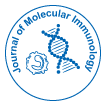Oral SMAD7 Antisense Oligonucleotide: A Novel Agent for Management of Crohn's Disease
Received: 21-Nov-2015 / Accepted Date: 24-Nov-2015 / Published Date: 28-Nov-2015
82174Editorial
Inflammatory bowel disease (IBD) comprises two major disorders: Crohn’s disease and Ulcerative colitis. They affect approximately 1.4 million Americans and several million people worldwide. The peak incidence of onset is among patients between the age groups of 15 and 30. It can affect the gastrointestinal tract anywhere from the mouth to anus but most commonly involves the ileum and colon. Transmural inflammation is the hallmark and it can be associated with strictures, granulomas, fistulas and patients are at a higher risk of colorectal malignancy. Host-microbiome interactions involving inappropriate immune response to the microbial flora in the intestines in a genetically susceptible host have been postulated as the pathogenesis of IBD. The lamina propria of the intestinal wall has a complex composition of immune cells maintaining a balance between immune tolerances and defending the body against pathogens. Infiltration of the lamina propria with innate immune cells (macrophages, neutrophils, natural killer cells and dendritic cells) and adaptive immune cells (B cells and T cells) is characteristic of IBD. Disturbance in the balance of these immune cells causes unchecked activation of these cells leading to increased levels of tumor necrosis factor α (TNF- α), interferon-γ, interleukin -1β and cytokines of the interleukin 23- Th 17 pathway [1]. These cytokines ultimately lead to leucocyte migration and recruitment in the microvasculature leading to inflammation in Crohn’s disease. TGF-β1 serves as a negative regulator of the immune response to T-cells and acts through the SMAD (small 'mothers against' decapentaplegic) group of proteins. TGF-β1 is a cytokine with multiple functions responsible for growth, differentiation and proper functioning of the immune cells. It initiates signaling through ligand dependent activation of a Series of transmembrane kinases through type I and type II receptors which lead to phosphorylation of SMAD proteins. Most important among them are SMAD 2 and SMAD 3 which along with SMAD 4 translocate to the nucleus and cause transcription of genes [2]. In Crohn’s disease, the abnormal inflammation is due to the decreased activity of TGF-β1 which leads to increased levels of SMAD7 protein. Binding of SMAD7 protein to the TGF-β receptor inhibits the normal immunosuppressive TGF-β1 signaling pathway leading to inflammation. The exact mechanism of increased production of SMAD 7 protein in IBD is not clearly understood but it has been hypothesized that increased activation of TNF-α, IL-1 and interferon-γ, which are increased in IBD mucosa can increase the levels of these proteins. Studies have shown that disruption in the SMAD 3 protein has resulted in decreased response of TGF-β1. Monteleone et al. demonstrated that there were increased levels of SMAD 7 proteins in intestinal mucosal samples of IBD patients analyzed by Western blot analysis [3]. This was associated with down regulation of phosphorylated SMAD 3 proteins. Treating the mucosal samples with SMAD 7 antisense or sense oligonucleotide demonstrated increased activity of TGF-β1 signaling and also leading to reduced activity of the pro-inflammatory cytokines like TNF-α and interferon-γ. These results of this prompted clinical trials targeting SMAD 7 proteins. Mongersen is a 21-base single-stranded phosphorothioate oligonucleotide that hybridizes with the human messenger RNA for SMAD 7 protein causing RNase H-mediated degradation of the RNA through an antisense mechanism [4]. It is an oral medication designed to be released in the ileum and colon for local effects, by pH- dependent coating of the tablet with methacrylic acid–ethyl acrylate copolymers. In their study, Monteleone et al. demonstrated that patients taking oral Mongersen 40 mg or 160 mg daily demonstrated clinical remission with Crohn’s disease activity index score (CDAI)5]. Studies have shown that n-butyrate acts as an inhibitor of NF-κβ that prevents its nuclear translocation but the exact mechanism remains controversial. Short chain fatty acids (SCFA) which are also formed due to bacterial fermentation in the colon have been shown to have immunemodulatory effects on macrophages reducing pro-inflammatory cytokines but exact mechanism is unclear. Further studies are needed to show if combination of Mongersen which causes SMAD 7 degradation and HDAC inhibitors which have shown antiinflammatory and anti-fibrotic properties would be beneficial, as they act through two independent mechanisms producing opposite effects on SMAD 7 protein levels.
References
- Kobayashi T, Okamoto S, Hisamatsu T, Kamada N, Chinen H, et al. (2008) IL-23 differentially regulates the Th1/Th17 balance in ulcerative colitis and Crohn’s disease. Gut 57: 1682-1689.
- Derynck R, Zhang Y, and Feng XH (1998) Smads: transcriptional activators of TGF-[beta] responses. Cell 95: 737-740.
- Monteleone G,Kumberova A,Croft NM,McKenzie C,Steer HW, et al. (2001) Blocking Smad7 restores TGF-beta1 signaling in chronic inflammatory bowel disease. J Clin Invest 108: 601-609.
- Monteleone G,Neurath MF,Ardizzone S,Di Sabatino A,Fantini MC, et al. (2015) AnoralSMAD7antisense oligonucleotide, andCrohn's disease. N Engl J Med 372: 1104-1113.
- Chang PV, Hao L, Offermanns S, Medzhitov R (2014) The microbial metabolite butyrate regulates intestinal macrophage function via histone deacetylase inhibition. ProcNatlAcadSci USA 111: 2247-2252.
Citation: Divey M, Chandrasekar T, Sandeep V (2015) Oral SMAD7 Antisense Oligonucleotide: A Novel Agent for Management of Crohn’s Disease. J Mol Immunol 2:e104.
Copyright: © 2015 Divey M, et al. This is an open-access article distributed under the terms of the Creative Commons Attribution License, which permits unrestricted use, distribution, and reproduction in any medium, provided the original author and source are credited.
Share This Article
Open Access Journals
Article Usage
- Total views: 10494
- [From(publication date): 12-2017 - Apr 04, 2025]
- Breakdown by view type
- HTML page views: 9647
- PDF downloads: 847
